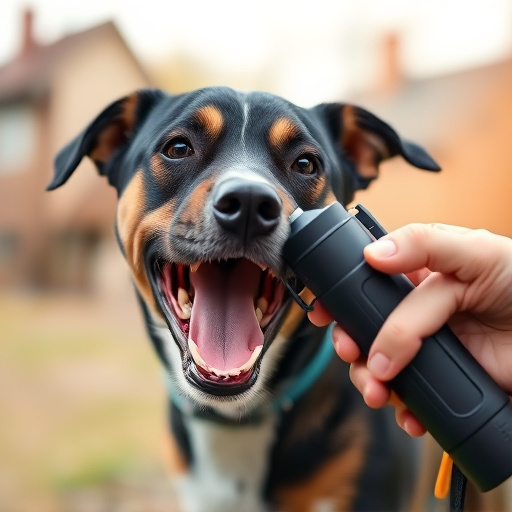Mace spray, while effective as an animal deterrent, can cause significant harm to pets if exposed. Immediate decontamination steps, including rinsing with water and cleaning fur with mild shampoo, are crucial after any Mace exposure. Monitoring for adverse reactions in a safe space is essential. Prioritize safety and consider humane alternatives like live traps and noise deterrents instead of Mace spray. Always consult a veterinarian promptly after pet exposure to mace to address potential irritation or breathing difficulties.
“Mace spray, a popular animal deterrent, offers significant control against aggressive or dangerous wildlife. However, its impact on animals must be understood to ensure ethical use. This article delves into the effects of mace spray on various species, providing insights for responsible handling. Learn how to decontaminate your pet after exposure to mace, a crucial step for their safety. Additionally, discover alternative animal control methods, emphasizing humane practices and effective solutions.”
- Understanding Mace Spray and Its Impact on Animals
- Decontaminating Your Pet After Exposure to Mace Spray
- Precautions and Alternative Animal Control Methods
Understanding Mace Spray and Its Impact on Animals
Mace spray, a powerful animal deterrent, has been widely used for its effectiveness in controlling and scaring off wildlife and domestic animals. However, understanding its impact on various species is crucial when considering its use as an animal control measure. The active ingredient in mace spray, capsaicin, stimulates the sensory nerves, causing immediate discomfort and temporary incapacitation. This chemical irritant can affect both wild and domesticated animals differently depending on factors like species, size, and exposure duration.
When a pet is exposed to mace spray, it’s essential to take immediate steps to decontaminate them. Rinsing the affected areas with plenty of water is the first step. You should then thoroughly clean their fur or feathers using a mild shampoo designed for pets. It’s crucial to avoid rubbing the irritant into deeper skin layers. After cleaning, ensure your pet is in a safe, enclosed space and monitor them for any adverse reactions or lingering effects.
Decontaminating Your Pet After Exposure to Mace Spray
If your pet has been exposed to mace spray during an animal control incident, it’s crucial to immediately initiate the process of decontaminating them. The first step is to remove any contaminated clothing or gear from the animal and rinse their fur thoroughly with warm water. This helps to wash away residual chemicals from the spray.
Next, use a mild, pet-safe detergent and continue rinsing until all signs of the mace spray are eliminated. It’s essential to avoid using harsh soaps or shampoos as they can irritate your pet’s skin further. After decontaminating, gently dry them with a soft towel, ensuring no moisture remains. Regular monitoring for any adverse reactions is vital, and if symptoms persist or worsen, seek immediate veterinary care.
Precautions and Alternative Animal Control Methods
When considering mace spray for animal control, it’s crucial to balance its effectiveness with potential risks and side effects. While mace can be a powerful tool to deter and control aggressive animals, it should be used as a last resort due to its impact on both target and non-target species. Always prioritize safety and humanely alternative methods whenever possible.
After any animal exposure, including mace spray incidents, decontaminating your pet is essential. Rinse the affected area thoroughly with water for at least 15 minutes, ensuring all remnants of mace are removed. Consult a veterinarian immediately for further guidance and treatment, as mace can cause irritation, breathing difficulties, or even more severe reactions depending on the concentration and sensitivity of the animal’s skin and respiratory system. Alternative animal control methods include live trap and release programs, habitat modification, noise deterrents, and visual scarers, which offer humane solutions with fewer potential risks to both animals and humans.
Mace spray, while a popular animal control tool, requires careful consideration due to its potential impact on animals. Understanding its effects and taking appropriate precautions is essential. If your pet has been exposed, promptly begin the process of decontaminating your pet after mace spray exposure to mitigate any adverse reactions. Additionally, exploring alternative animal control methods can offer more humane solutions that are effective in managing wildlife encounters or pet deterrents without causing harm. By staying informed and adopting responsible practices, we can find a balance between maintaining safety and preserving the well-being of both humans and animals.
